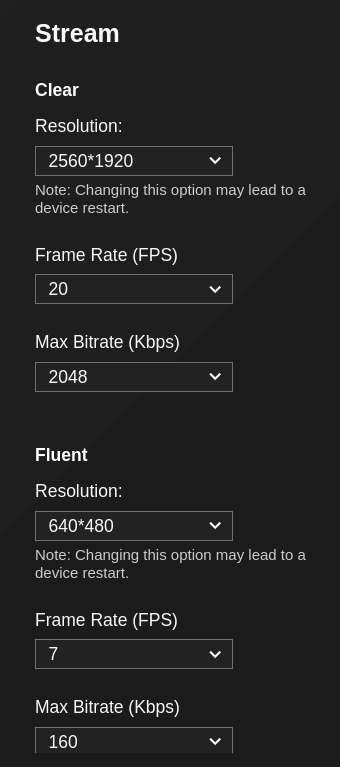Camera Specific Configurations
MJPEG Cameras#
The input and output parameters need to be adjusted for MJPEG cameras
Note that mjpeg cameras require encoding the video into h264 for recording, and rtmp roles. This will use significantly more CPU than if the cameras supported h264 feeds directly.
JPEG Stream Cameras#
Cameras using a live changing jpeg image will need input parameters as below
Outputting the stream will have the same args and caveats as per MJPEG Cameras
RTMP Cameras#
The input parameters need to be adjusted for RTMP cameras
UDP Only Cameras#
If your cameras do not support TCP connections for RTSP, you can use UDP.
Model/vendor specific setup#
Annke C800#
This camera is H.265 only. To be able to play clips on some devices (like MacOs or iPhone) the H.265 stream has to be repackaged and the audio stream has to be converted to aac. Unfortunately direct playback of in the browser is not working (yet), but the downloaded clip can be played locally.
Blue Iris RTSP Cameras#
You will need to remove nobuffer flag for Blue Iris RTSP cameras
Reolink 410/520 (possibly others)#

According to this discussion, the http video streams seem to be the most reliable for Reolink.
Unifi Protect Cameras#
In the Unifi 2.0 update Unifi Protect Cameras had a change in audio sample rate which causes issues for ffmpeg. The input rate needs to be set for record and rtmp.